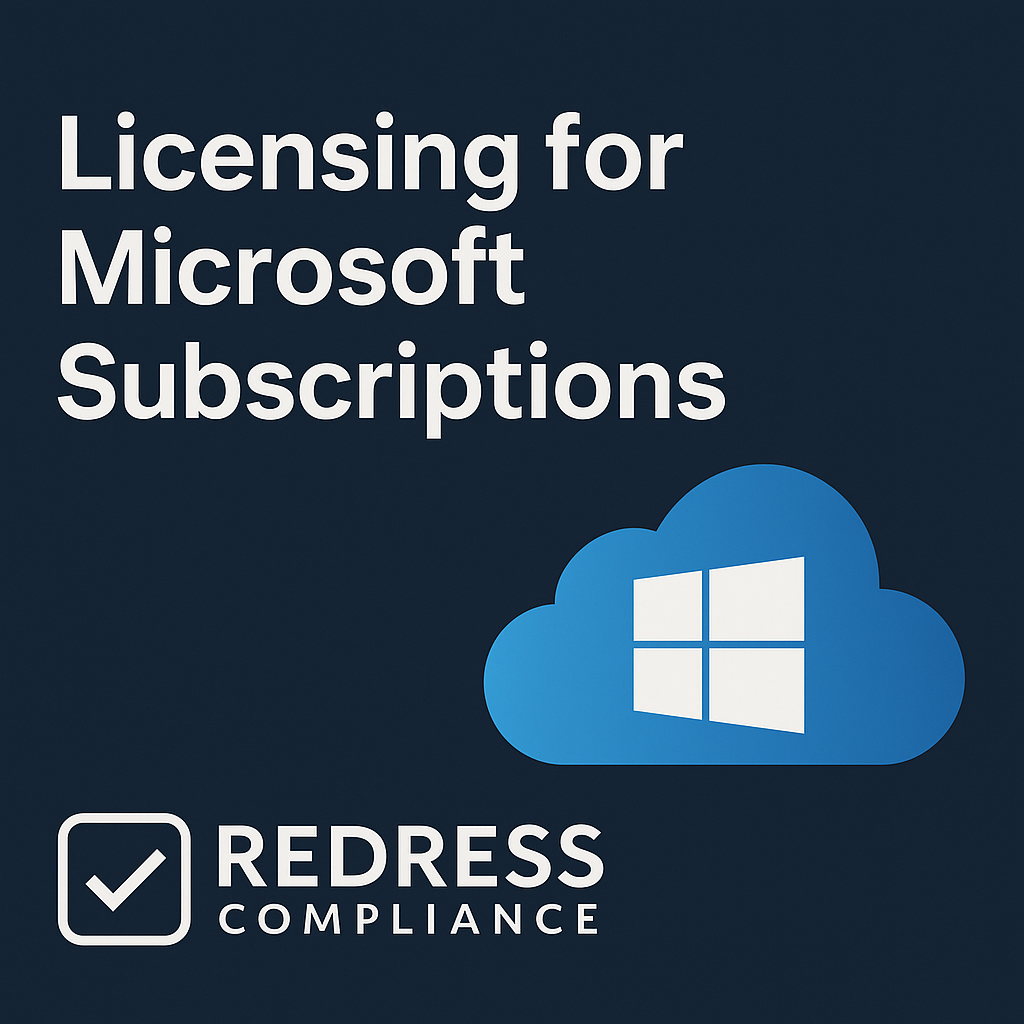
Licensing for Microsoft Subscriptions
Microsoft’s shift from one-time software purchases to recurring subscription licensing has transformed IT budgets. Now, Microsoft 365, Azure, and Dynamics 365 are delivered as ongoing services – turning large upfront CapEx buys into steady OpEx expenses. This gives more predictable costs and scalability, but also requires active oversight to prevent runaway spend.
Overview of Microsoft Subscription Models
Microsoft offers subscriptions across its major product lines:
- Microsoft 365 – user-based subscription for Office & productivity tools.
- Azure – consumption-based cloud infrastructure/services.
- Dynamics 365 – modular business apps (CRM, ERP) via subscription.
Microsoft is all-in on subscriptions now. Perpetual licenses (buy-once, own-forever) are fading out or receiving minimal updates. The subscription model ensures that customers always receive the latest features and can easily scale their usage up or down.
However, it also means IT spend becomes a continuous operational cost. Understanding each model’s mechanics and costs is crucial for planning and avoiding surprises on the monthly bill.
CapEx vs OpEx Budgeting
The move from one-time license purchases (CapEx) to subscriptions (OpEx) has big implications. CapEx refers to a large upfront cost that is amortized over several years, while OpEx spreads the cost as ongoing expenses.
Many CFOs prefer the OpEx model for its predictable, pay-as-you-go nature, which aligns with usage. However, some companies still see value in CapEx – owning a license outright can be cheaper if you run it for many years without upgrades, and it gives a sense of control.
Since Microsoft licensing is predominantly subscription-based today, most IT software spending has shifted to OpEx. The key is to negotiate contracts with price protections and to monitor the cumulative spend over time.
Microsoft 365 Licensing
Microsoft 365 (M365) is a per-user subscription bundle (Office apps, email, Teams, security tools) delivered via the cloud. Its OpEx model makes costs predictable and lets you scale licenses up or down easily.
The flip side is potential license creep – companies often over-buy or get upsold into higher-tier plans and add-ons that many users don’t fully utilize. It’s easy to pay for unused features or too many E5 premium seats.
To control costs, regularly audit usage and right-size your license mix (not everyone needs the most expensive plan). Also negotiate multi-year price locks and built-in flexibility to adjust license counts, so you only pay for what you truly use.
Azure Licensing
Azure is Microsoft’s cloud platform, where you pay for what you use (OpEx). It offers incredible scalability and agility – you can spin up resources on demand with no upfront hardware spend. The risk is that Azure costs can spike if you don’t actively manage usage (idle resources, large data transfers, etc.).
To mitigate this, implement strict cloud governance by setting budgets, monitoring consumption, and utilizing reserved instances or savings plans for predictable workloads.
When negotiating Azure, commit carefully and ask for incentives like credits or extra discounts when you commit to spend. Utilizing existing licenses in Azure via the Hybrid Benefit is another way to reduce cloud VM costs.
Dynamics 365 Licensing
Dynamics 365 is a set of cloud business applications (CRM, ERP) licensed per user per module. Its modular subscription lets you start small and add functionality as needed. This flexibility prevents large upfront costs and ensures you pay only for the modules you use.
However, costs can pile up as you add more apps or users, and some capabilities might overlap with tools you already have.
Negotiation is key: if you’re adopting Dynamics 365, try to bundle it with your Microsoft 365 and Azure agreements to get better discounts. Also, ensure you can adjust or drop licenses if usage changes, so you’re not locked into paying for modules that aren’t delivering value.
Hybrid Scenarios
Many enterprises maintain a hybrid environment, keeping some workloads on-premises (with perpetual licenses) while moving others to the cloud (subscriptions). Microsoft provides hybrid benefits to ease this mix.
For example, with active Software Assurance on your servers, you can apply those licenses to Azure (via Azure Hybrid Benefit) instead of paying twice for the same software.
There are also grace periods during migrations where a workload can run in both places concurrently to avoid double costs.
The primary challenge in hybrid licensing is complexity: you must closely track licenses to avoid compliance issues and overspending.
In negotiations, leverage your existing investments – ask for migration credits or extended dual-use rights if you’re planning to shift more workloads to Azure. These ensure you maximize the value of the licenses you’ve already bought when transitioning to the cloud.
Cost Comparison – 5-Year Horizon
Over five years, subscription licensing can cost more in total than traditional one-time purchases, but it provides continuous value along the way.
With perpetual CapEx licensing, you pay a lot upfront and then little or nothing for years if you skip upgrades. With subscriptions, you pay every year, and Microsoft may raise prices, so costs accumulate.
However, those regular fees ensure you’re always on the latest software and fully supported. To manage the long-term TCO, it’s vital to negotiate multi-year price protections and regularly re-evaluate your license needs so you’re not overpaying for benefits you don’t use.
Common Pitfalls
- Over-licensing Microsoft 365: Assigning too many licenses or using higher-cost plans where they aren’t needed. Example: purchasing an E5 plan for every employee, even if only a fraction uses its features. This leads to paying for shelfware (unused licenses).
- Uncontrolled Azure consumption: Letting cloud usage run without oversight. It’s easy to spin up Azure services and forget to turn them off. Set budgets and monitor usage to prevent this.
- Double-paying during migrations: Moving a workload to Azure while also keeping it on-premises without utilizing hybrid rights can result in two payments for the same software. This happens if you don’t use Microsoft’s dual-use rules or if you prolong a migration. Use hybrid benefits to avoid this overlap.
- Auto-renewal without review: Letting an Enterprise Agreement auto-renew “as is” can lock you into outdated or oversized licensing. Treat every renewal as an opportunity to adjust your mix and secure better terms rather than rubber-stamping the old deal.
- Not claiming available benefits: Microsoft agreements often include extras (training credits, support, hybrid use rights) – but you have to claim them. If you don’t use these benefits, you leave money on the table. Always ask and opt in for any perks or programs available, because they won’t apply automatically.
Comparison Table
| Model | Cost Type | What’s Included | Pros | Risks | Negotiation Angles |
|---|---|---|---|---|---|
| Microsoft 365 | OpEx | Office apps + cloud services (per user) | Predictable per-user costs; scalable up/down; integrated suite | Unused licenses (shelfware); pressure to upgrade to higher tiers | Adjust licenses to actual use; mix E3/E5 as needed; negotiate multi-year price locks |
| Azure | OpEx | Cloud infrastructure & services (usage-based) | Elastic scaling; no upfront hardware; many services | Cost overruns if not managed; hidden fees (egress, etc.) | Commit carefully; use reserved instances; enforce budgets & get Azure credits |
| Dynamics 365 | OpEx | Modular business apps (CRM, ERP per user) | Start small and add modules as needed; tight integration with MS ecosystem | Cumulative costs as modules/users grow; overlap with other tools possible | Bundle modules for discount; align Dynamics with EA for leverage; request trial periods |
| Hybrid Setup | Mix | On-prem licenses + cloud rights (with SA) | Leverage existing licenses in cloud; gradual migration path | Complex licensing rules; danger of double-paying if mismanaged | Use SA for hybrid benefits; negotiate migration grace periods/credits |
FAQ
Q: Can we still buy perpetual Microsoft licenses?
A: Yes, in some cases, you can still get perpetual versions of products like Office, Windows Server, or SQL Server – but these are becoming rare. Microsoft is now focused on subscriptions, so perpetual options often lack new features and can be less cost-effective in the long term.
Q: How can we avoid paying for unused Microsoft 365 licenses?
A: Treat license management as an ongoing task. Regularly check who’s using what – remove or reassign licenses when staff leave, and avoid assigning expensive plans to users who don’t need them. In short, audit, optimize, and adjust continually so you’re not paying for seats or features no one is using.
Q: What drives Azure subscription cost overruns?
A: Usually a lack of oversight. Common culprits are VMs left running when not needed, over-provisioning resources “just in case,” and large, unexpected egress (data transfer) fees. The fix is diligent monitoring: set budgets/alerts and review costs regularly to catch issues early.
Q: Can we mix on-premises and subscription licensing?
A: Yes – this is common. For example, you might run legacy systems on-prem under perpetual licenses while using cloud subscriptions for new projects. Microsoft’s hybrid benefits (via Software Assurance) let you apply existing licenses to cloud use to avoid double-paying. The key is careful management: track what’s running where and use those benefits so you don’t pay twice.
Q: How can we protect against Microsoft price increases?
A: Always negotiate price protections. For example, lock in your rates or cap any annual increase during a multi-year term. If Microsoft announces a price hike, try to renew before it takes effect. Also, remind Microsoft you have alternatives and won’t accept steep hikes. In short, make price terms a key part of every renewal discussion.
For more insights, read Microsoft Licensing for Small Businesses – Practical Guide for Cost, Compliance, and Flexibility.
Five Expert Recommendations
- Audit and right-size Microsoft 365 regularly. Keep a tight handle on your Microsoft 365 licenses – remove unused accounts and avoid over-paying for high-tier plans not needed.
- Enforce cloud cost governance in Azure. Set budgets, alerts, and do regular cost reviews to control Azure spend. Governance and accountability prevent waste better than any discount.
- Bundle and negotiate together. Coordinate major purchases – if you’re renewing Microsoft 365, expanding Azure, or adding Dynamics 365, negotiate them at the same time. A larger overall deal can win you bigger discounts from Microsoft.
- Leverage hybrid investments. Use Software Assurance to apply existing licenses in Azure, and ask for Azure credits or other support during migrations. Use the licenses you’ve already paid for to save on cloud costs.
- Build in renewal flexibility. Negotiate caps on price increases and flexibility to reduce or reallocate licenses at renewal. Keeping your options open ensures you’re never stuck with a bad deal.
